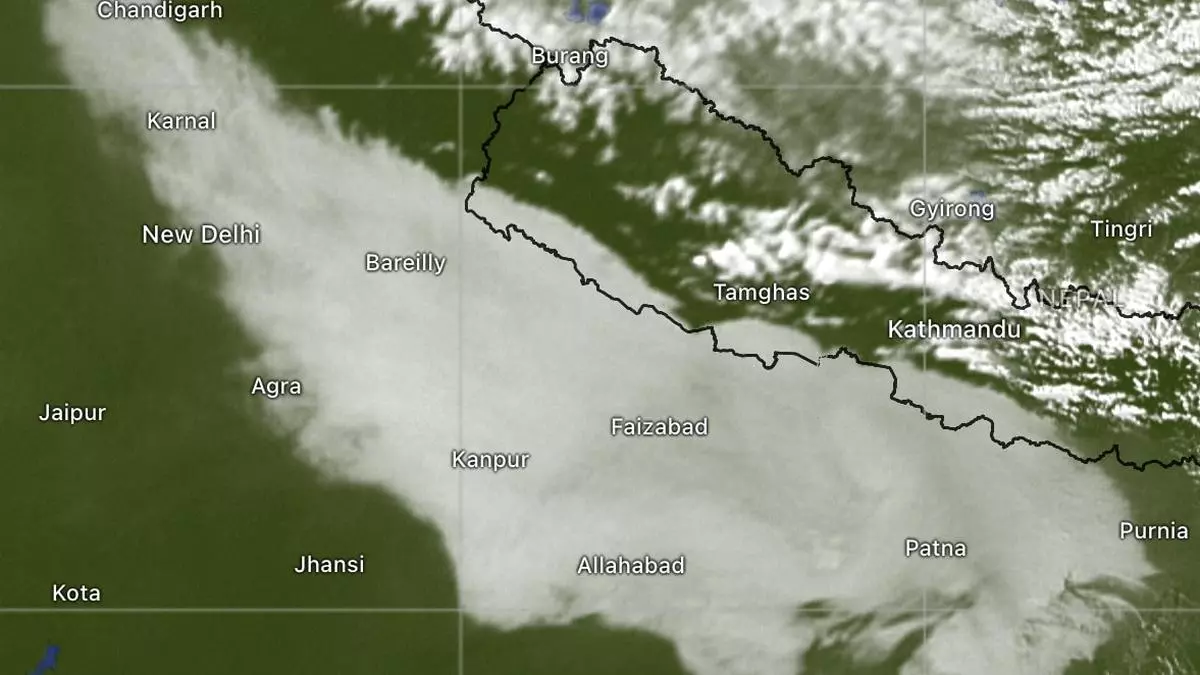Palm oil, both refined and crude, is now costlier than other cooking oils such as sunflower and soyabean oils. Prices of palm oil have surged on rising supply concerns following floods in Malaysia and on Indonesia’s plans to increase export taxes and hike the edible oil’s share in biodiesel to 40 per cent, traders said.
“Once a poor man’s (cooking) oil that was distributed in ration shops, palm oil today is the costliest,” says a trader.
The US Department of Agriculture in its “Oilseeds: World Markets and Trade” update for December said palm oil prices in Indonesia and Malaysia have increased since mid-November, while soyabean oil prices declined due to higher-than-expected Argentina crush and exports.
Landed price
Data from the Solvent Extractors Association of India (SEA) show that the landed price of RBD (refined, bleached and deodorised) palm oil is currently $30/tonne higher than sunflower oil and $87 than soyabean oil. Crude palm oil is $65/tonne higher than sunflower oil and $122 than soyabean oil.
The landed price of crude palm oil (CPO) is higher as Malaysia and Indonesia — the top two producers of the oil, impose export duties on CPO to encourage value addition.
B V Mehta, Executive Director, SEA, told businessline that Indonesia is using more palm to manufacture biodiesel.
“The Indonesian government has decided to adopt the B40 biodiesel mandate. About 2 million tonnes (mt) of palm oil will be consumed for biodiesel production by Indonesia, reducing the total availability for the food basket,” he said.
Drop in surplus
From January 1, Indonesia will blend 40 per cent of palm oil in bio-diesel. Indonesia wants to reduce the availability of palm oil for food purposes to maintain the price and help growers benefit, said Mehta.
Sudhakar Rao Desai, President of the IVPA (Indian Vegetable Oil Producers’ Association), said Indonesia has increased refining capacities, mainly driven by the biodiesel mandate. “These capacities are using CPO to make biodiesel. With this, the surplus CPO available is gradually reducing,” he said.
Pakistan-based vegetable oil market analyst said Indonesia’s B40 biofuel mandate has significantly tightened palm oil exports while rising production costs and seasonal demand in major markets such as India have supported prices.
“Palm oil has become costlier than soyabean and sunflower oils due to tight global supplies, driven by reduced sunflower oil production in the Black Sea region…,” he said.
Price forecast raised
The USDA update said, “Heavy rains and insufficient exportable supplies in Indonesia and Malaysia are contributing to high palm prices whereas soyabean oil prices have come under pressure from large global soyabean supplies, creating an unusual premium for palm oil prices relative to soya.”
Research agency BMI, a unit of Fitch Solutions, said concerns over reduced production in Indonesia and Malaysia and an expected drawdown of inventories have underpinned much of palm oil’s recent price strength.
“Between October 1, at which time the palm oil price was Malaysian ringgit (MYR) 3,995 per tonne and November 4, accumulated price increases amounted to 22.1 per cent,” it said. BMI has raised its palm oil price forecast for 2024 and 2025 to MYR 4,050 per tonne (MYR 3,850) and from MYR 3,900 (MYR 3,650).
SEA’s Mehta said palm oil prices are on the rise since the plantations were entering a low production cycle, Mehta said: “One can expect the production to be lower in the coming months.”
Indian processors face threat
IVPA’s Desai said palm oil is tight now because the Malaysian production has been stagnant for a while now. “The refining capacity in Indonesia is organised and working well at the cost of the Indian refining capacity,” he said.
Mehta said Indonesia’s move is to reduce the import of fossil fuels. This cuts the total availability of palm oil for the food basket leading to a rise in palm oil prices.
Desai said Indonesia’s subsidy for the export of refined oil is making the import of refined oil cheaper into India. “If this goes on for a longer time then the Indian refined oil manufacturing industry will suffer,” he said.
Indonesia has gradually been increasing export the levy and duties alongside the price rally so that it could collect more revenue from exports and subsidise biodiesel production at home.
Consumer shift
The USDA said as palm oil prices continue to climb, soyabean oil exports are expected to offset some but not all of the declining palm oil exports, as the global vegetable oil market continues to tighten.
In November, imports of soyabean oil by India jumped 172 per cent and sunflower oil by 165 per cent. RBD palmolein shipments increased by 66 per cent but CPO imports dropped 21 per cent.
Hameed said the surge in palm oil prices may lead to a switch towards soft oils in price-sensitive markets, as consumers and manufacturers adjust to the changing cost dynamics.
“However, limited global supplies of soyabean and sunflower oil could restrict the extent of this substitution, keeping the vegetable oil market finely balanced in the months ahead,” he said.
Impact on farmers
Asked if will there be a demand shift from palm oil to soft oils due to the high landed prices of palm oil, Desai said the import basket will be the first to shift.
Mehta said though palm oil is a preferred oil of many, the lower income group will switch over to cheaper oils when there is a price surge. However, middle- and high-income groups normally stick to the same oil they consume. Other segments such as HoReCa (hotels, restaurants and catering) and industrial users may switch over from palm oil to cheaper oils, he said.
On the other hand, excessive import of soyabean oil has impacted soyabean prices in the domestic market. Prices are ruling ₹500-600 a quintal below the ₹4,892 minimum support price, said Mehta.
“Our seeds are not being crushed and the imports are increasing,” he said.
The SEA executive director said soyabean meal is under pressure due to the excessive production of soyabean and meal in the global market. India has been outpriced by around $50-60 a tonne by competing nations.
The Government should give incentives for the export of rapeseed meal and soyabean meal to support the market, he said.









Leave a Comment